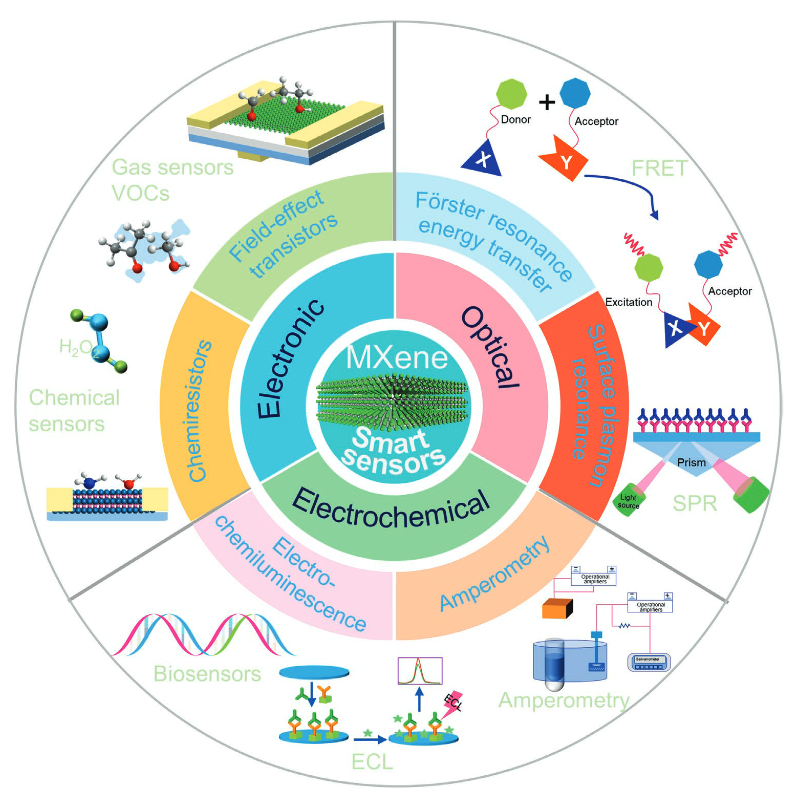The Internet of Things era has promoted enormous research on sensors, communications, data fusion, and actuators. Among them, sensors are a prerequisite for acquiring the environmental information for delivering to an artificial data center to make decisions. The MXene-based sensors have aroused tremendous interest because of their extraordinary performances. In this review, the electrical, electronic, and optical properties of MXenes are first introduced. Next, the MXene-based sensors are discussed according to the sensing mechanisms such as electronic, electrochemical, and optical methods. Initially, biosensors are introduced based on chemiresistors and field-effect transistors. Besides, the wearable pressure sensor is demonstrated with piezoresistive devices. Third, the electrochemical methods include amperometry and electrochemiluminescence as examples. In addition, the optical approaches refer to surface plasmonic resonance and fluorescence resonance energy transfer. Moreover, the prospects are delivered of multimodal data fusion toward complicated human-like senses. Eventually, future opportunities for MXene research are conveyed in the new material discovery, structure design, and proof-of-concept devices.

The Internet of Things era has promoted enormous research on sensors, communications, data fusion, and actuators. Among them, sensors are a prerequisite for acquiring the environmental information for delivering to an artificial data center to make decisions. The MXene-based sensors have aroused tremendous interest because of their extraordinary performances. In this review, the electrical, electronic, and optical properties of MXenes are first introduced. Next, the MXene-based sensors are discussed according to the sensing mechanisms such as electronic, electrochemical, and optical methods. Initially, biosensors are introduced based on chemiresistors and field-effect transistors. Besides, the wearable pressure sensor is demonstrated with piezoresistive devices. Third, the electrochemical methods include amperometry and electrochemiluminescence as examples. In addition, the optical approaches refer to surface plasmonic resonance and fluorescence resonance energy transfer. Moreover, the prospects are delivered of multimodal data fusion toward complicated human-like senses. Eventually, future opportunities for MXene research are conveyed in the new material discovery, structure design, and proof-of-concept devices.
